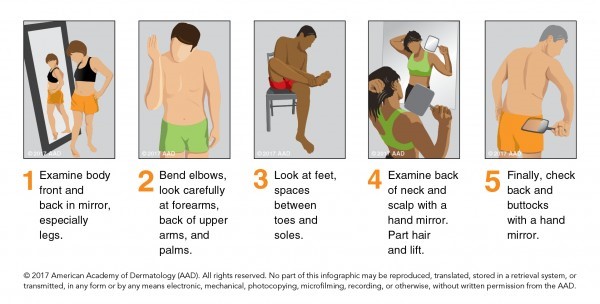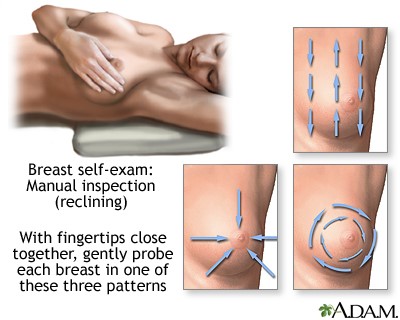While women may live longer than men, they are not necessarily living better and are more vulnerable to certain chronic conditions like osteoporosis, thyroid disease, and depression. Women have unique medical needs because of their female physiology, reproductive ability and related hormonal influences.
Routine Physical Exam
A routine physical exam provides you the opportunity to access preventive services and discuss strategies to minimize health risks and achieve a healthy lifestyle. Based on age and risk, annual assessments should include:
- services like vaccinations, that improve your health by preventing diseases and other health problems.
- Screenings, which are medical tests to check for diseases early when they may be easier to treat.
- Education and counseling to help you make informed health decisions based off your health habits and health history.
Most insurance plans cover a variety of preventive services for women without charging a co-payment or co-insurance, even if you have not met your yearly deductible. Contact your health insurance or visit HealthCare.gov to learn more about the preventive care benefits available with Marketplace health plans.
Gynecological
Women are advised to have an annual Well Woman exam. During the visit a pelvic exam and Pap test may be performed. It is also a good time to discuss other concerns regarding gynecological health. Pap tests (or Pap smears) look for cancers and precancers in the cervix. An human papillomavirus (HPV) tests looks for HPV in cervical cells.
Recommended Screening Schedule:
- 21-29: A Pap test every 3 years
- 30-65:
- A Pap test every 3 years, OR
- An HPV test every 5 years, OR
- A Pap and HPV test together every 5
- 65+: Can stop screening if regular screenings over the past ten years were done
Follow your healthcare provider’s advice if more testing is needed due to pre-cancer or cancer.
For more information on Pap and HPV tests, visit the Office of Women’s Health website.
Sexually Transmitted Diseases
Sexually Transmitted Diseases (STDs), also called Sexually Transmitted Infections, are passed from one person to another person through sexual contact. You can have an STD without showing any signs or symptoms. Many STDs can be easily treated, so ask your doctor about what testing is right for you. Talk with your partner about getting tested as well.
Prevention
The best way to prevent an STD is to not have vaginal, oral, or anal sex.
If you do have sex, you can lower your risk of getting an STD by following easy precautions. The precautions work best when used together. No single precaution can protect you from every single type of STD. For more information or to learn about our STD clinic visit our Confidential HIV/STD Counseling & Testing page.
Recommended Screening Schedule:
- Ages 13-64: At least one HIV test
- Sexually Active Women <25: Annual gonorrhea and chlamydia screening
- Pregnant/At-risk for pregnancy: Syphilis, HIV, Chlamydia, Gonorrhea, and Hepatitis B screening starting early in pregnancy
- Women who have unsafe sex* or share injection drug equipment: HIV, gonorrhea, and chlamydia screening every year.
*Unsafe sex is defined as those who do not use a condom correctly every single time they have sex, have unprotected sex, multiple or anonymous sex partners, or a sex partner who has an STD.
Skin Cancer
Skin cancer is the most common type of cancer in the United States. Skin exams allow for early detection making it easier to treat. You should complete your own exam once a month as well as an exam by your healthcare provider, or a dermatologist, annually. To complete your own skin exam:
- Examine the front and back of your body in a full-length mirror. Check your underarm areas, under your breasts, and your left and right sides.
- Examine both sides of your arms, palms, between your fingers and your fingernails.
- Sit down and examine the backs of your legs and feet. Check between your toes, toenails, and soles of feet.
- Examine the back of your neck, scalp, and ears.
- Use a hand mirror to check your lower back, buttocks, and genital area.

Report any changes or irregularities to your healthcare provider.
For more information visit the Skin Cancer Foundation.
Breast Cancer
This is the second most frequently diagnosed cancer in American women. All women can get breast cancer- even those with no family history. Regular self-breast exams will make you familiar with how they normally look and feel. The best time to do a monthly self-breast exam is about 3-5 days after your period starts because your breasts are not as tender or lumpy at this time in your monthly cycle. Perform the exam at the same time every month. If you have gone through menopause, do your exam on the same day every month.
To complete your own breast exam:
- Begin by lying on your back. It is easier to examine all breast tissue if you are lying down.
- Place your right hand behind your head. With the middle fingers of your left hand, gently yet firmly press down using small motions to examine the entire right breast.
- Next, sit or stand. Feel your armpit, because breast tissue goes into that area.
- Gently squeeze the nipple, checking for discharge. Repeat the process on the left breast.
- Use one of the patterns shown in the diagram to make sure you are covering all of the breast tissue.

- Next, stand in front of a mirror with your arms by your side.
- Look at your breasts directly and in the mirror. Look for changes in skin texture, such as dimpling, puckering, indentations, or skin that looks like an orange peel.
- Also note the shape and outline of each breast.
- Check to see if the nipple turns inward.
- Do the same with your arms raised above your head.
Report any changes to your healthcare provider.
Recommended Screening Schedule:
- Ages 40-49: Talk with your healthcare provider about when to start and how often to get a mammogram
- Ages 50-74 with an average risk for breast cancer: mammogram every two years
Follow your healthcare provider’s advice when deciding a screening schedule.
For more information visit the CDC Breast Cancer page.
Healthy Weight
Your weight affects more than just how you look. It can be a contributing factor in many diseases. While the Body Mass Index (BMI) has limitations, it is the current standard for measuring obesity. BMI is a person’s weight in kilograms divided by the square of height in meters. A high BMI can be an indicator for health risks, but a healthcare provider would perform further testing and not depend on a BMI alone.
Calculating BMI
- Kilograms and meters: weight (kg)/ [height (m)]2 OR
- Pounds and inches: [weight (lb)/(height (in))2] x 703 OR
- BMI Calculator
BMI Levels:
- Below 18.5: Underweight
- 18.5-24.9 Normal or Healthy Weight
- 25-29.9: Overweight
- 30.0+: Obese

Some individuals, like athletes, may have a high BMI because of increased muscularity rather than increased body fatness. A healthcare provider should perform appropriate health assessments in order to evaluate an individual’s health status and risks.
For more information, visit CDC Healthy Weight.
Cholesterol
Cholesterol is a type of fat made by your liver and carried in your blood. High cholesterol levels can lead to an increased risk of heart disease. If you are age 20 or older, you should be screened every 4-6 years or as directed by your doctor.
Total Blood Cholesterol Range:
- Less than 200 mg/dL: Desirable
- 200-239 mg/dL: Borderline High
- 240+ mg/dL: High
For more information on how cholesterol impacts your health, visit the American Heart Association.
Blood Glucose
Blood glucose (blood sugar) is used to monitor for diabetes and pre-diabetes. It is important for blood glucose levels to stay in a healthy range. If they go too low, you can lose the ability to think and function normally. If they go too high, it can cause damage and complications to the body over the course of many years.
Three tests can be completed to test for diabetes: A1c test which measures your average blood glucose level over the past 2 or 3 months; Fasting blood glucose test which measures your blood sugar after and overnight fast (not eating); or a glucose tolerance test which measures your blood glucose before and after you drink a liquid that contains glucose. The chart below describes the current ranges for each of these tests.
Talk with your healthcare provider to understand your risk for type 1, type 2, or gestational diabetes and a recommended screening schedule.
To learn more, visit the CDC’s Diabetes page
 .
.
More Information
For other important health related topics follow the links below:


Accommodations available upon request. Please contact 815-802-9400 Option 3 for more information.